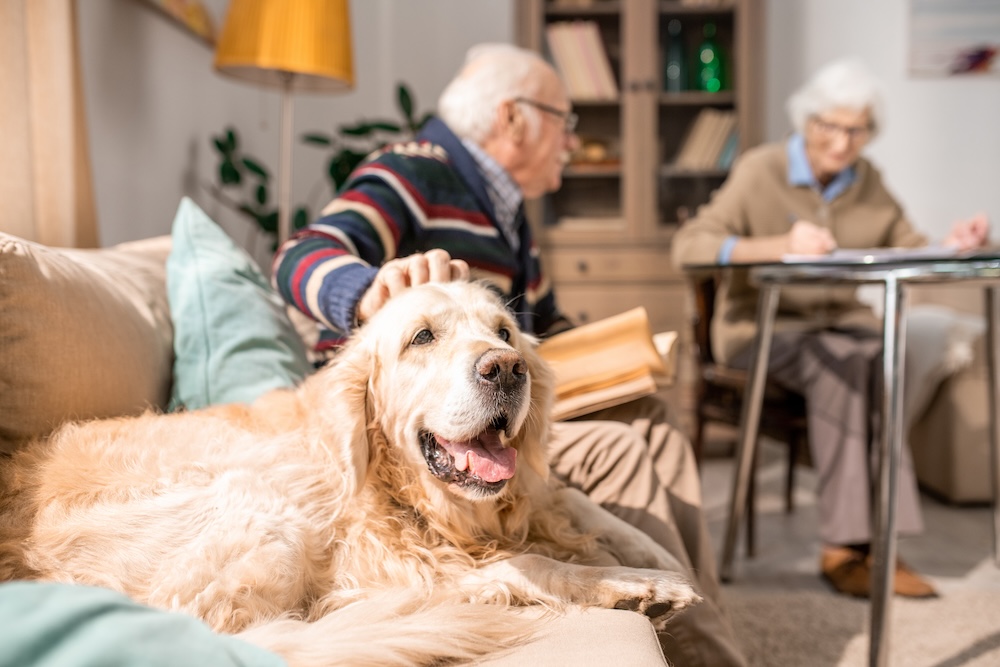As dogs age, their joints wear down, leading to arthritis, a painful condition that affects mobility and quality of life. While it can’t be cured, proper care helps senior dogs stay comfortable and active. Recognizing when arthritis needs urgent attention is key, making pet emergency care tips essential. Supporting your dog’s joints while preparing for emergencies ensures they get the best care possible.
Recognizing the Signs of Arthritis in Senior Dogs
Arthritis in dogs develops gradually, making it easy for pet owners to overlook the early signs. Some of the most common symptoms include stiffness, difficulty standing up after rest, reluctance to climb stairs or jump, and noticeable limping or lameness. Dogs with arthritis may also become less active, showing reduced interest in walks or playtime, and some may experience behavioral changes like increased irritability due to pain.
Monitoring your dog’s symptoms and knowing when to seek veterinary assistance is essentialIf your dog suddenly stops walking, avoids putting weight on a limb, or cries out in pain, it may signal a serious issue needing urgent care. Follow pet emergency care tips like calling your vet before moving an injured or immobile dog to prevent further harm and ensure prompt treatment.
Joint Supplements and Medications for Arthritis Relief
One of the most effective ways to manage arthritis in senior dogs is by using joint supplements that support cartilage health and reduce inflammation. Glucosamine and chondroitin are commonly recommended to help maintain joint flexibility and slow cartilage degeneration. Omega-3 fatty acids, found in fish oil, can also provide anti-inflammatory benefits that ease discomfort.
For dogs experiencing more severe arthritis, veterinarians may prescribe non-steroidal anti-inflammatory drugs (NSAIDs) to manage pain. While NSAIDs can greatly improve mobility, they should only be used under veterinary supervision to avoid side effects. Alternative treatments, such as acupuncture and laser therapy, may also provide relief for dogs who do not tolerate medication well. Understanding pet emergency care tips, such as monitoring for adverse medication reactions like vomiting or lethargy, helps ensure that treatments are safe and effective for your dog.
The Importance of Weight Management for Arthritic Dogs
Excess weight places additional strain on a dog’s joints, worsening arthritis symptoms and accelerating joint damage. Managing your senior dog’s weight through a balanced diet and controlled portions can significantly improve their mobility and reduce discomfort. Your veterinarian can recommend specialized diets formulated for joint health, which may contain added supplements like glucosamine to further support aging joints.
Regular exercise, even for arthritic dogs, is important for maintaining muscle strength and flexibility. Low-impact activities such as slow walks or swimming can help keep joints moving without putting excessive stress on them. However, pet emergency care tips should always be followed when exercising an arthritic dog—watch for signs of fatigue, limping, or excessive panting, and adjust activity levels accordingly to prevent overexertion.
Physical Therapies to Improve Comfort and Mobility
Physical therapy is a valuable tool for dogs with arthritis, helping to maintain flexibility and muscle strength. Hydrotherapy, or water therapy, allows dogs to exercise in a way that minimizes joint strain while strengthening their muscles. Gentle stretching and massage can also help improve circulation and reduce stiffness in sore joints.
Cold and heat therapy may also provide comfort to arthritic dogs. A warm compress or heated pet bed can soothe stiff joints, while a cold pack can help reduce inflammation after activity. Knowing pet emergency care tips, such as recognizing when your dog’s pain becomes severe and requires immediate veterinary attention, ensures that physical therapies remain beneficial and do not unintentionally worsen discomfort.
Creating a Comfortable Home Environment for Arthritic Dogs
Making small adjustments to your home can greatly enhance your senior dog’s comfort. Providing orthopedic or memory foam bedding helps relieve pressure on aching joints. Placing non-slip rugs or mats on slippery floors prevents falls and injuries. For dogs struggling with stairs, ramps or pet steps offer an easier way to reach their favorite resting spots without strain.
Temperature control is also important, as cold weather can make arthritis symptoms worse. Keeping your home warm during colder months and using pet-safe heating pads can help keep your dog comfortable. Being prepared with pet emergency care tips, such as having a plan in place for transporting a dog who suddenly struggles to walk, is an essential part of ensuring long-term well-being.
When to Seek Veterinary Care for an Arthritic Dog
Routine vet checkups help manage arthritis by tracking disease progression and adjusting treatments. Sometimes, immediate care is needed. If your dog becomes immobile, cries in pain, or has swollen joints, it may signal a worsening condition that requires urgent attention.
Knowing pet emergency care tips in advance allows you to respond quickly and appropriately. Keeping your veterinarian’s contact information accessible and having a transport plan for emergencies ensures that your dog receives timely medical attention when needed.
Helping Your Senior Dog Live Comfortably with Arthritis
Managing arthritis in senior dogs takes a mix of proper nutrition, joint supplements, weight control, physical therapy, and home adjustments to improve their quality of life. Knowing pet emergency care tips helps you spot urgent symptoms, keeping your dog comfortable and mobile.
At Faithful Friends Veterinary Clinic, we are here to support you in providing the best care for your aging dog. Whether you need guidance on arthritis management, physical therapy options, or emergency care, our team is dedicated to helping your pet enjoy their golden years with comfort and ease. Contact us today to learn more about treatment options and how to keep your senior dog happy and pain-free.




